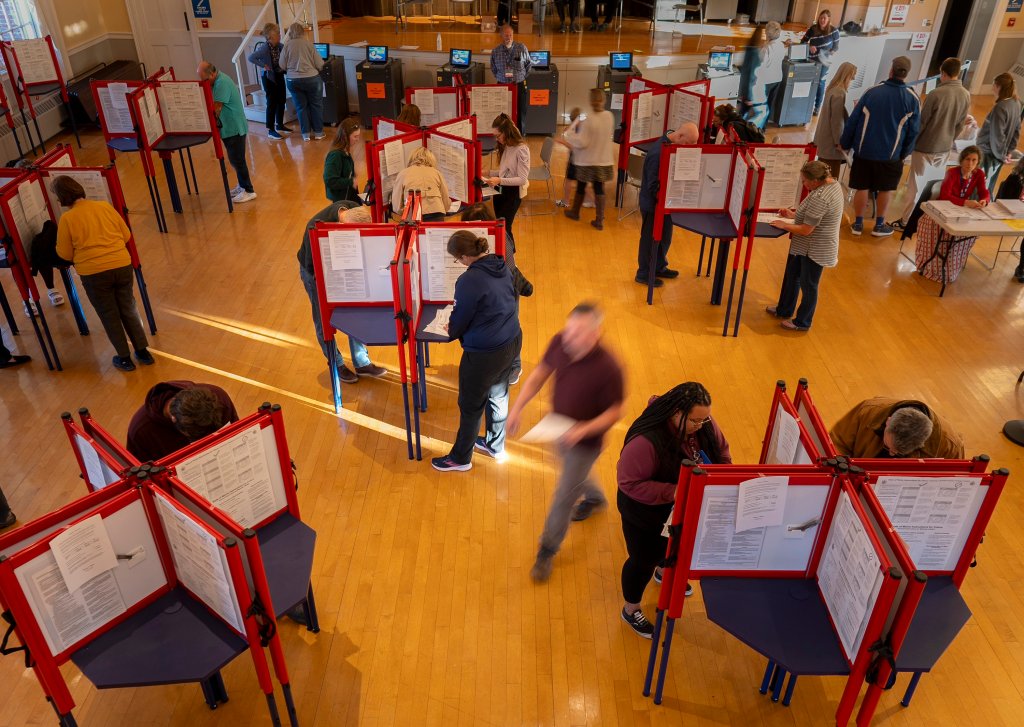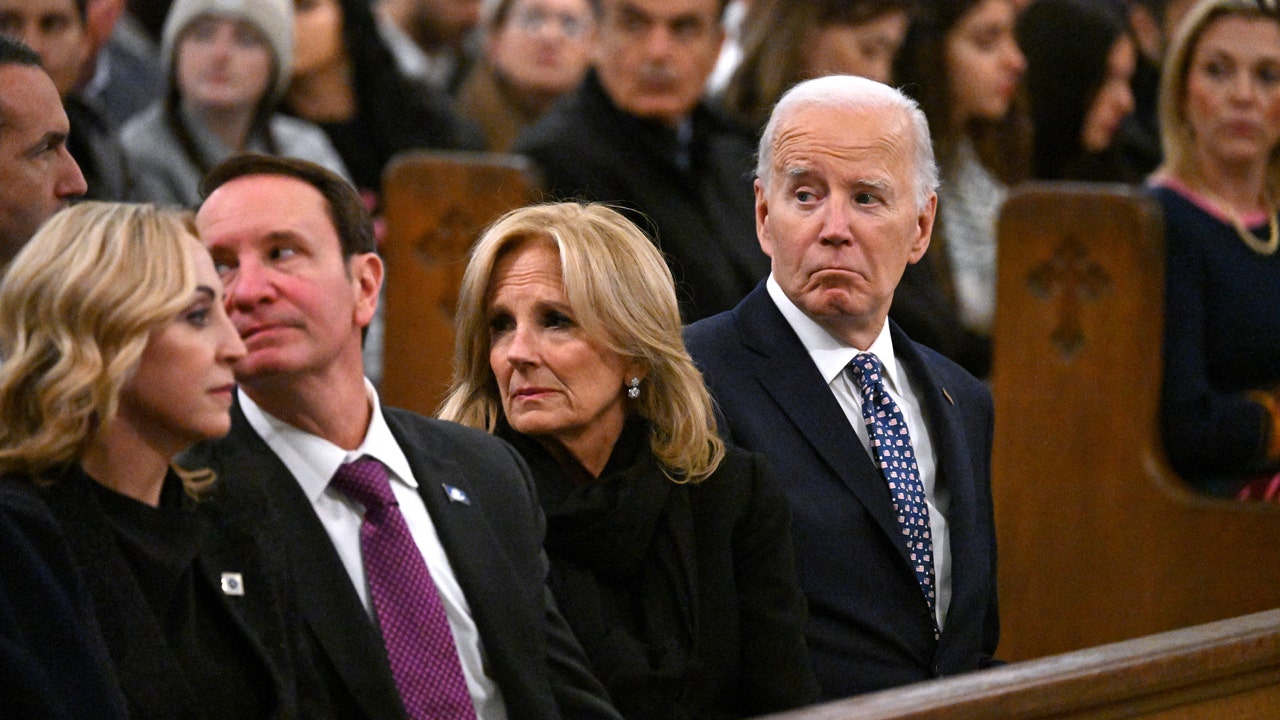Like many of her colleagues, family law attorney Taylor Kilgore has been watching the list of child protection cases in need of lawyers grow over the past year.
When the state removes children from their parents’ care because of concerns about abuse or neglect, those parents are guaranteed an attorney under Maine law.
Increasingly, they aren’t getting one. Over the course of 2024, the number of child protection cases in need of at least one attorney increased 700 percent, according to a list compiled by the judicial branch. On January 3 of last year, the state lacked attorneys for 14 cases, the list showed. On December 30, that number stood at 112.
The list is sent to the Maine Commission on Public Defense Services, which distributes it to attorneys on its roster. The list is used to help find attorneys for parents who can’t afford them, but it also serves as a way for the state to understand the size of the problem.
In late October, Kilgore came up with an idea to help get cases off the list. Her plan was to ask the state to let her look at the confidential cases and then pitch them to other attorneys, who she thought would be more likely to accept cases if they had a sense of the circumstances and amount of work that would be involved. Child protection case records are typically kept confidential to protect the identity of the involved children and parents.
She pitched the idea to Jim Billings, executive director of the Maine Commission on Public Defense Services, the independent commission tasked with paying and managing the roster of attorneys representing clients who can’t afford a private attorney. Billings brought the idea to the judicial branch, which agreed to let Kilgore have access to the unstaffed cases in Lewiston.
But after getting a look behind the curtain at the Lewiston courthouse, Kilgore has concerns about whether the list is properly accounting for the problem.
“I don’t think the list is actually accurate,” Kilgore said.
Maine’s system for removing children from parents consists of several government entities: the Department of Health and Human Services, which investigates child abuse and neglect; the Attorney General’s Office, which represents the department in court; and the judicial branch, which oversees the proceedings and ultimately rules on cases.
Together, these three bodies oversee a growing number of children and parents whose cases are hidden from public view.
The system removes around 1,000 children a year, and is one that federal auditors found failed to follow its own rules. It also seems increasingly unable to provide parents with the legal representation guaranteed to them by law, a problem highlighted in a child welfare watchdog report published last week.
“The shortage of defense attorneys for parents has caused weeks and months-long delays in the progress of reunification cases, harming children, parents, and increasing staff workload,” Maine’s child welfare ombudsman Christine Alberi wrote in her annual report to lawmakers.
The report follows a December letter of no confidence in the head of DHHS’s Office of Child and Family Services, which investigates allegations of child abuse and neglect. The letter was signed by 150 caseworkers.
Kilgore’s experience raises questions about whether the system is capable of accurately tallying all the families and children it is failing.
‘The list is not perfect’
In late November and early December, Kilgore spent two weeks reviewing cases in the Lewiston court and calling attorneys to try to get them to take cases off the list.
She found four cases that had been staffed for at least three weeks, but had not been removed from the list. More concerning were cases she found that needed attorneys but didn’t appear on the list.
Kilgore had an associate go to the courthouse and take notes on the cases on the docket call, writing down the docket number any time a case lacked counsel. From that, she was able to identify three cases in need of attorneys that were not on the list. Additionally, a criminal defense attorney who heard about Kilgore’s work contacted her about a client. The attorney asked if she knew the status of the client’s child protection case. But when Kilgore looked, she found the case was not on the list.
“I had to write back and say ‘they’re not identified anywhere in this list as needing counsel,’” Kilgore said.
The judiciary distributes a similar list for criminal cases without an attorney, and MCPDS executive director Jim Billings said Kilgore’s experience mirrors accounts he’s heard from attorneys on the criminal side.
There are cases that are on the list that should probably come off because they have already been staffed, Billings said. Conversely, Billings has heard from criminal defense attorneys that there are unrepresented criminal defendants who should be on the list, but are not.
“The list is not perfect,” Billings said. “But right now it’s the best tool we have to try and track the cases and triage as best we can.”
Judicial branch spokesperson Barbara Cardone did not respond to multiple emails with questions about how the list is compiled, maintained and updated.
Kilgore’s project fits into the commission’s effort to ensure poor Mainers get the representation guaranteed to them under state and federal law. The list of criminal cases grew throughout 2024. At the end of December, there were nearly 1,000 unstaffed cases, including more than 140 cases that involved defendants in jail.
To combat this problem, MCPDS is in the process of opening and staffing public defender offices across Maine. The commission has also hired Machias-based attorney Molly Owens as chief of the new system’s parents’ counsel division. Owens is tasked with building a team of public defenders devoted to representing indigent parents in child protection cases. She is in the process of hiring three attorneys to join the nascent team.
Three years from now, MCPDS wants the parents’ counsel defender team to have between 20 to 25 attorneys, allowing them to represent one parent in about half the state’s cases.
Owens praised Kilgore’s efforts to understand and staff child protection cases in Lewiston and said she would like to see those efforts replicated.
“Do I think there are cases that are not on the list? If Taylor is finding them, then yes,” she said.
“I don’t know how I would know how common that is until we do what Taylor is doing.”
Parents who wish to maintain custody of their children are fighting against a system that a recent federal audit found failed to follow its own rules when investigating allegations of child abuse or neglect.
A capable attorney can help identify those missteps, put pressure on the department and use those errors to argue on behalf of parents in court. Attorneys can also connect clients to services that can help move them toward reunification with their children.
But a lack of attorneys makes that kind of zealous representation less likely, which in turn results in more families separated and more cost to the state.
Cases are confidential, so it’s unclear how often judges disagree with the state or rule in favor of parents. The Monitor asked the judicial branch for insight into this issue but was told the judiciary could not provide data on when the courts rule against the department.
The Monitor also submitted a public records request in October to both DHHS and the Attorney General’s Office, which represents the department in court, seeking data on how often the state loses in court. Neither agency has provided records or an estimate of when they will be able to fulfill the request.
One recent decision from the Maine Supreme Court shows how even repeated failures by the department can have little impact on the outcomes of cases.
On October 3, the high court published a memorandum decision in an appeal of a termination of parental rights out of Portland. The memo notes that the lower court was right to terminate the parental rights of the mother despite the fact that the judge in the case ordered the department to file a rehabilitation and reunification plan “seven times during the pendency of the case and never did so.”
Maine’s child removal rate has made it an outlier in the United States. Only Maine and Nebraska took more children into state custody in 2022 than in 2018, according to the most recent federal data.
More children entering state custody increases demand for attorneys at the same time as the supply is falling. The number of attorneys rostered with MCPDS representing a parent in at least one case fell by more than half, from 230 to 110, between 2018 and 2024.
‘We can’t do it alone’
The December 30 edition of the parents’ counsel list contained 112 cases. This translates to an even greater number of attorneys, since each parent in a case is entitled to an attorney, and representing more than one parent in a case would present a conflict of interest. Some cases involve multiple children, sometimes with multiple partners, and thus could require three or more attorneys.
Of those cases, 79 were added to the list more than a month prior. Twenty-seven were added to the list before October, meaning that parents in those cases could have been waiting for representation for three months or longer while their children were in state custody.
Seven of the cases were added before July 2024. On the December 16 list, there was a case dating from April 2023 — over a year and a half earlier. By the end of the year, after The Monitor asked Judiciary spokesperson Barbara Cardone about the case and received no response, it had been removed. Given the concerns raised about the accuracy of the list, it’s unclear whether the case had finally been staffed in late December, or if it had been staffed earlier but had not been removed from the tally.
An additional five cases had no dates at all.
Kilgore started her project in late November. She reviewed 43 docket numbers in Lewiston and was able to find representation for 21 of the 56 parents involved in those 43 cases.
One of the cases involved a parent who had been on the list since February. By Kilgore’s count, the parent had been without an attorney for 281 days. Confidentiality rules prevented Kilgore from disclosing details of the case, but she noted that it had procedural issues that desperately required an attorney.
“The case was kind of on fire,” she said. “In my opinion, the parent’s rights were being violated.”
Kilgore was able to find an attorney to take the case, and said that overall she thinks the experiment was successful. Billings agreed.
“I think it shows that if there are devoted resources, even in a market that we think is saturated, we can still make some progress on the list if the effort is put in,” Billings said.
Next month, Kilgore is going to bring the experiment to the Portland courthouse.
But the problem is larger than finding attorneys, said Owens, the parents’ counsel chief. DHHS and the courts need to be held accountable and find ways to keep families together while keeping kids safe, she said.
“A lot of departments and agencies got us here,” Owens said. “We want to be part of the solution, but we can’t do it alone.”
This story was originally published by The Maine Monitor, a nonprofit civic news organization. To get regular coverage from the Monitor, sign up for a free Monitor newsletter here.

























/cdn.vox-cdn.com/uploads/chorus_asset/file/24982514/Quest_3_dock.jpg)





